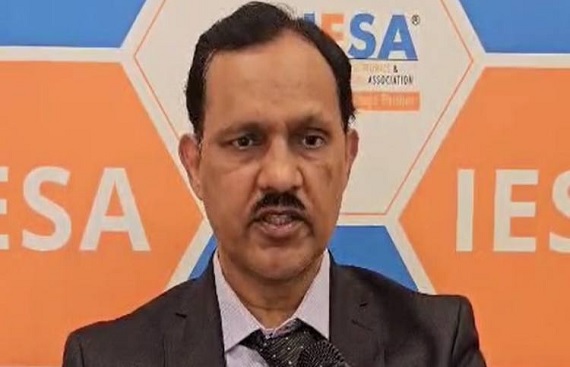India's Electronics Exports Soar as PLI Scheme Attracts Global Investments: IESA Chief
By
siliconindia | Thursday, 27 March 2025, 03:21 Hrs

India's exports of electronics have seen a steep jump, thanks to the government's Production-Linked Incentive (PLI) scheme and electronic manufacturing clusters, said Ashok Chandal, President of the India Electronics and Semiconductor Association (IESA). In a chat with IANS on Wednesday, Chandal said that these schemes have not only been building local production but also made India one of the preferred destinations for foreign investors, both domestic and international.
He pointed out that government policies have successfully tackled industry issues, allowing India to compete with established manufacturing centers such as China and Vietnam. Moreover, the increasing domestic demand for electronics in the country has further driven the drive for local production.
"The PLI program and the 'Make in India' scheme have lowered cost differences considerably, and Indian manufacturing of electronics is now more competitive internationally", said Chandal. He also highlighted that the government has begun to release reimbursements under the PLI scheme across sectors such as electronics, semiconductors, automobiles, and pharmaceuticals.
"This further establishes the intent of the government on its policies, which will spur additional investment and growth of manufacturing capabilities", he added.
One of the main drivers of India's export surge has been Apple, which has increased local manufacturing operations. Apple's contract makers, Foxconn and Pegatron under the Tata Group partially have improved India's high-tech manufacturing presence.
"This has given a major boost to India's global recognition, showing it can manufacture quality electronics," Chandal said. Apple currently represents more than 50 percent of India's overall electronics exports.
While smartphones remain the primary driver of India’s electronics exports, other segments, including automotive electronics, electric vehicles (EVs), medical devices, industrial IoT, and consumer electronics, are gaining momentum.
Chandal projected that India’s electronics market could reach $500 billion by 2030, presenting significant export opportunities. However, he stressed the importance of increasing domestic value addition to maximize long-term benefits.
To maintain this growth path, he emphasized making India's supply chain more resilient and increasing research and development (R&D) skills so that the nation continues to emerge as an global electronics manufacturing powerhouse.
